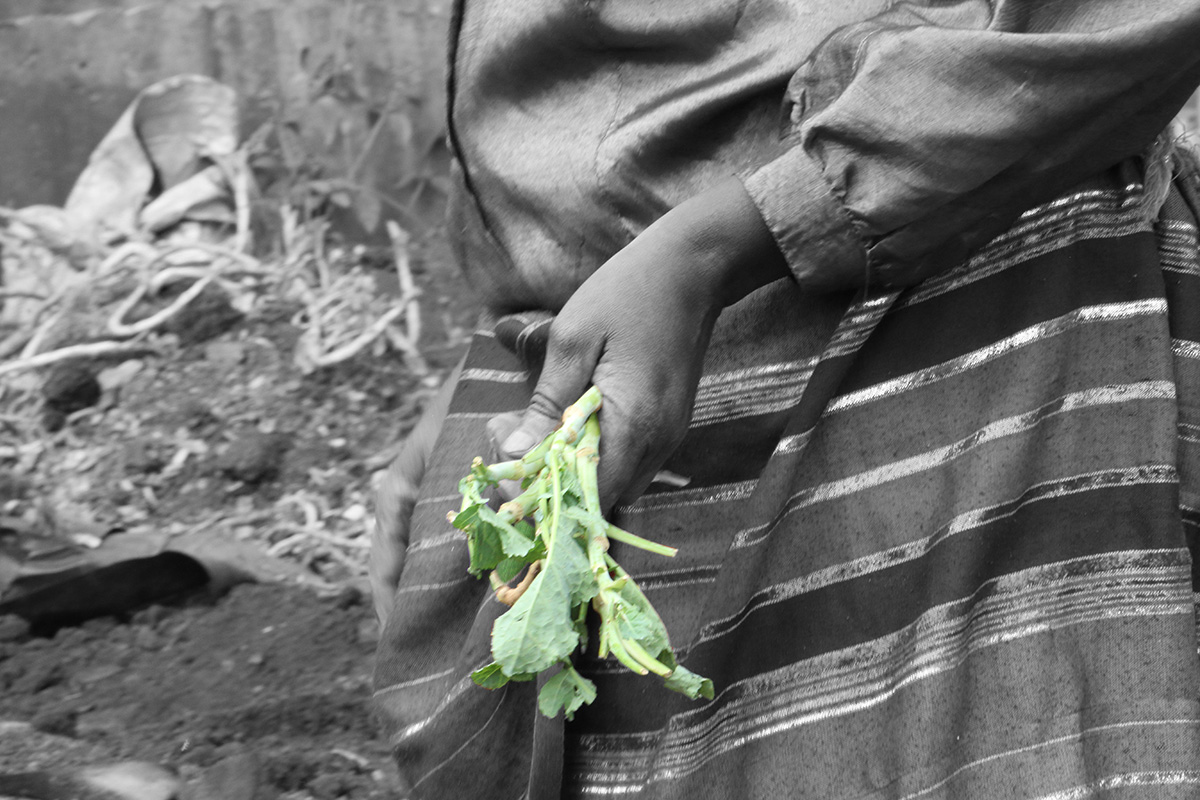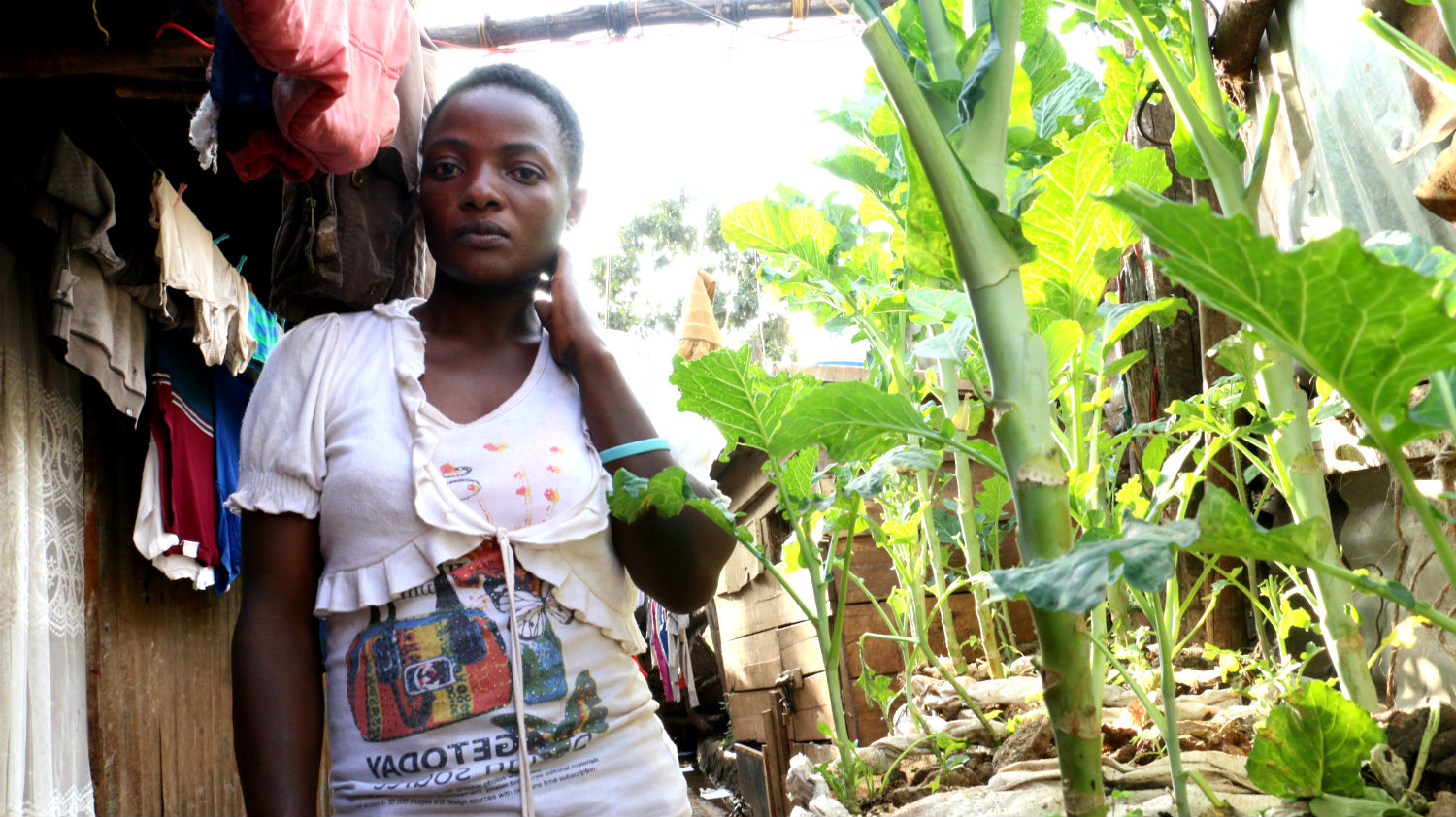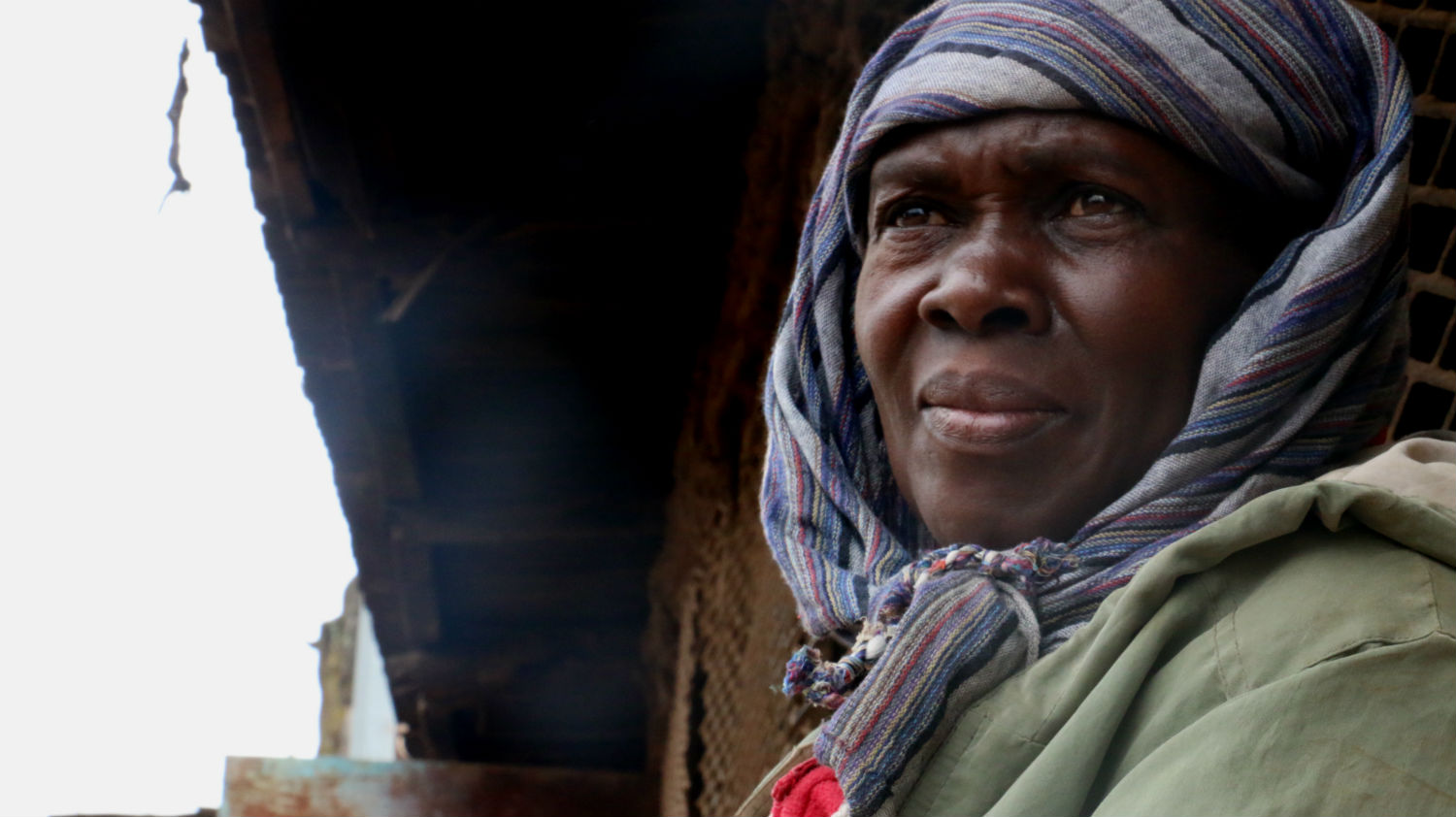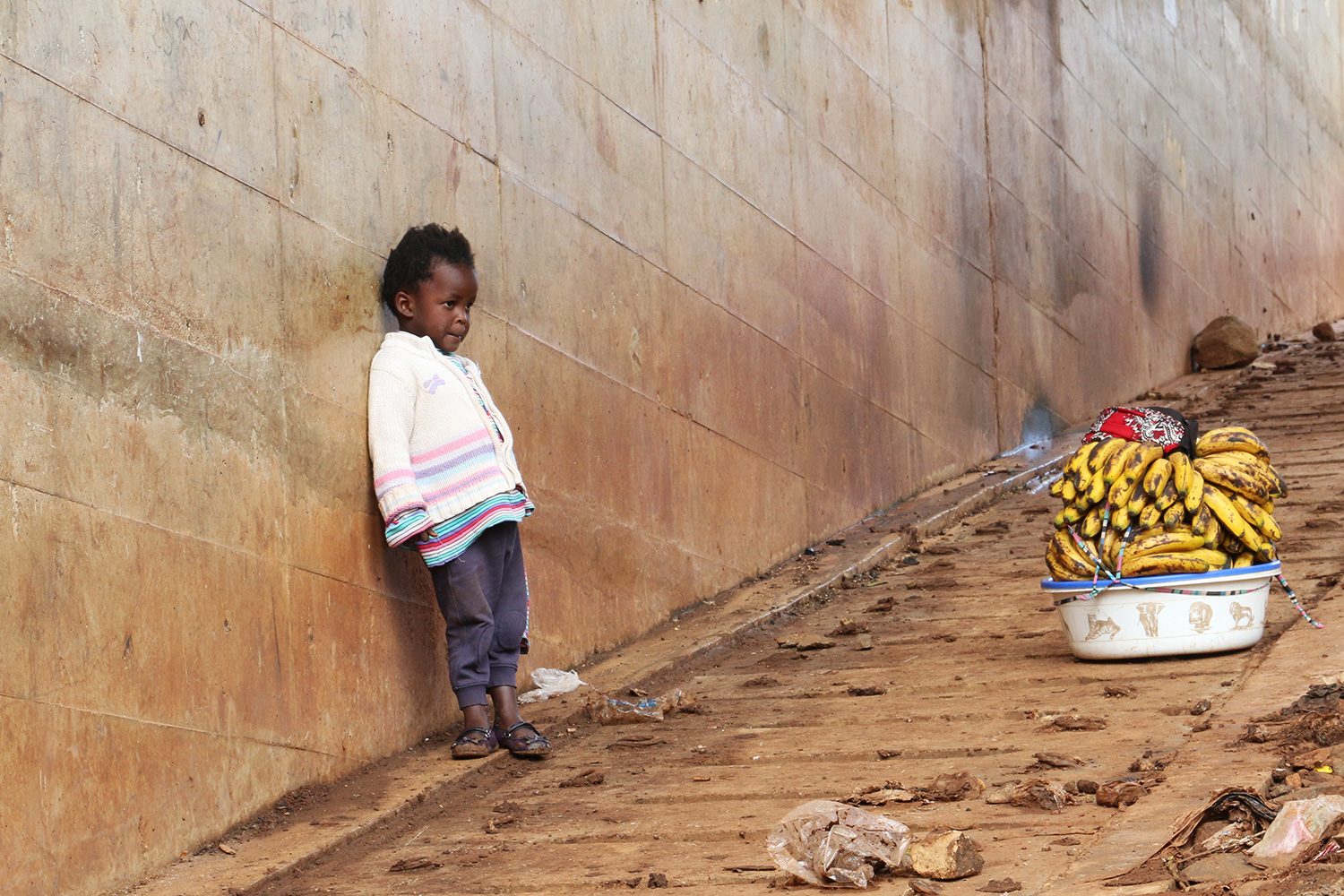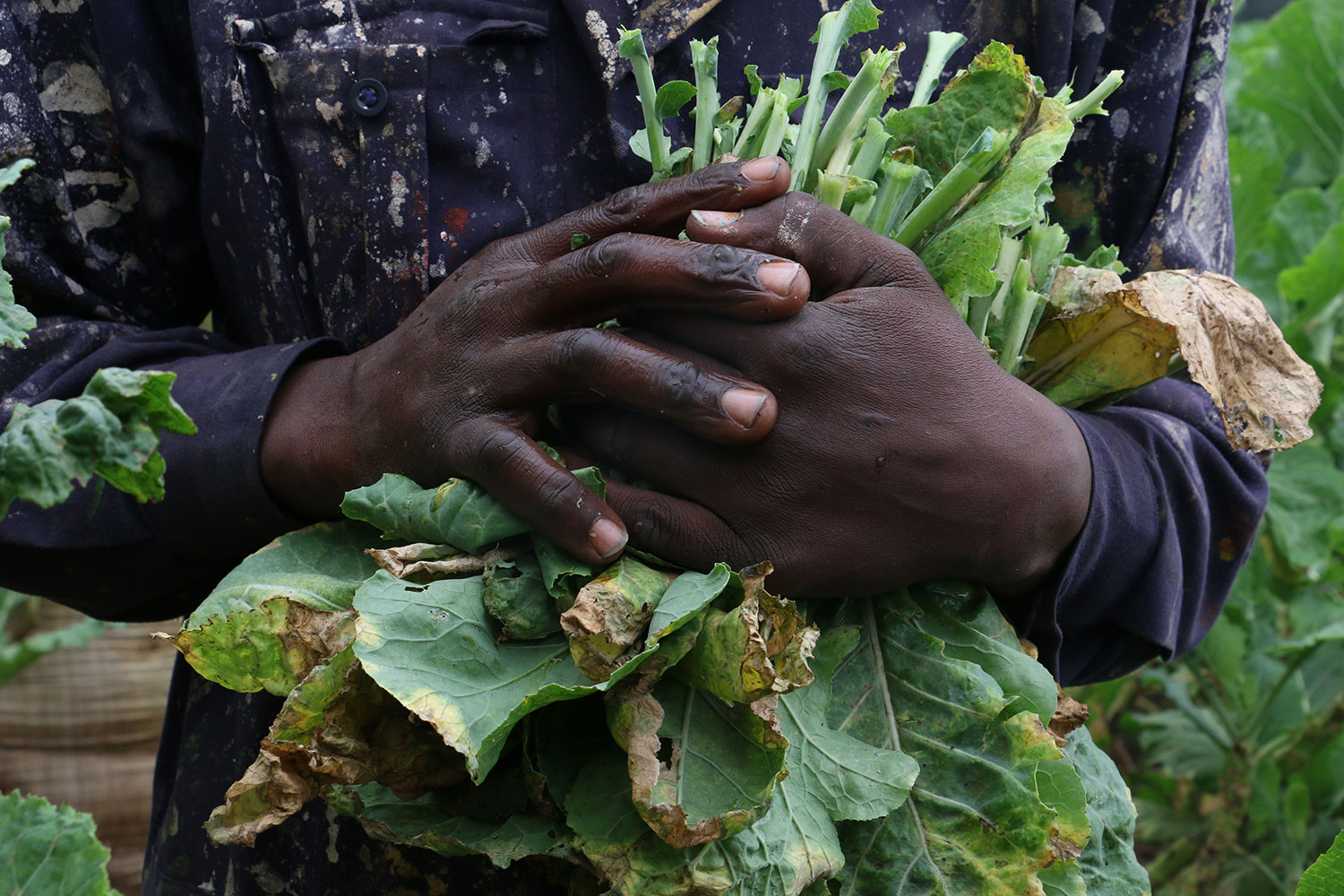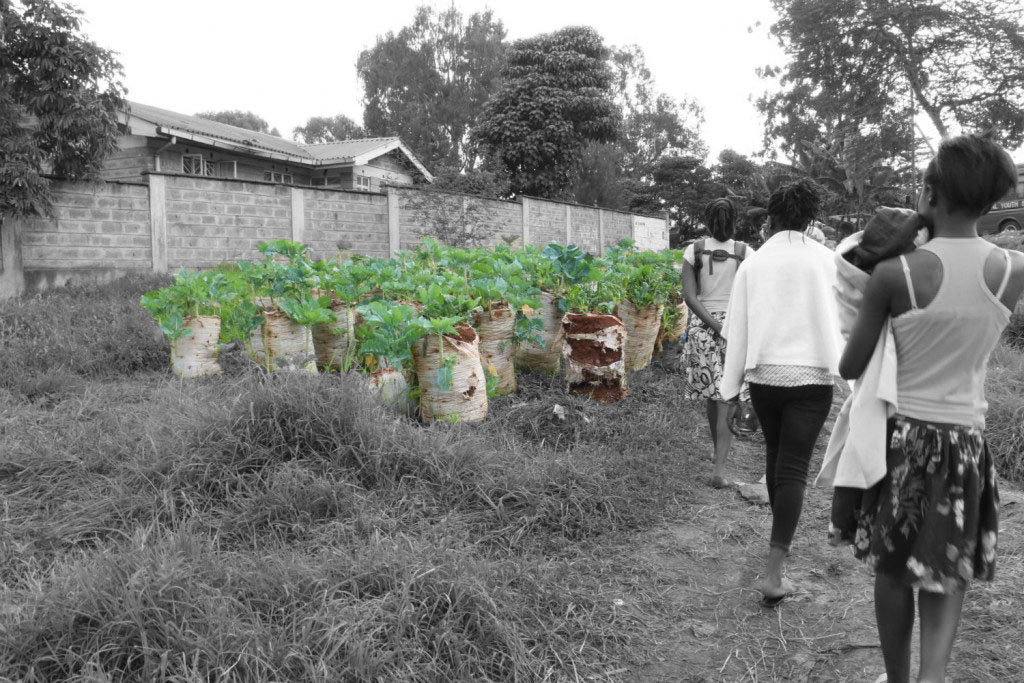
The path ahead
What’s happening in Kibera is part of a global shift toward creating sustainable, equitable cities where all citizens have the right to fresh, affordable, sustainable food.
“I’ve seen filmmakers and documentarians talk about a revolution,” says Luc Mougeot, a senior program specialist at Canada’s International Development Research Centre and a veteran of the urban agriculture movement.

The morning sun shines on Ali at the Al Hadid urban farm. [Photo © Evelyn Harford]
Cities in both the global north and the global south have begun to embrace urban agriculture. It’s been a slow build but we’re starting to see serious commitment from local authorities across the planet, something researchers and urban agriculture enthusiasts welcome.
“It’s a number of things that are adding up and, of course, it could eventually transform significantly our urban landscapes. If we project this trend to say 30-50 years from now, our cities could look very, very different not only for urban agriculture but because of urban agriculture,” says Mougeot. ”I would say that developments we’re seeing in urban agriculture are part of the bigger revolution.”

Maggie checking out her friend Marieme’s kale. [Photo © Evelyn Harford]
By 2050 it is estimated that 66 per cent of the population will live in urban areas according to the United Nations World Urbanization Prospects report. With an increase in urban populations, urban agriculture will have to become part and parcel of urban planning. An increased population will strain food systems and call for innovation, like the green revolution already taking hold in Nairobi. A balance between food and growth will have to be struck.

View from a highrise in downtown Nairobi. [Photo © Evelyn Harford]
Politicians like Babu have helped to get urban agriculture reforms through county assembly.
“I encourage my constituents to plant,” he says. “For any country, the key development of the country is agriculture. We cannot stay without agriculture in Nairobi.
Babu is concerned about the affordability of imported food.
“Agriculture has to be there because we cannot depend on other countries,” he says.
The imperative to produce fresh, affordable and local food is seen by the nearly 5,000 farmers already practicing in Kibera.
Urbanization has created more competition for jobs and many are feeling the economic strain. The monetary pinch has caused many residents, especially the ones with the fewest resources, to get creative and get into business themselves.
Urban farming presents a unique opportunity to confront the deep historical and cultural roots of patriarchy and colonialism through land ownership policy amendments and policies that take into account gender equity and food security. What my report revealed, however, is that women are still largely being left out of the decision-making processes concerning urban agriculture.
Women are not addressed with enough commitment at the grassroots level. More action is needed to ensure the most vulnerable (women and youth) are represented when decision making happens. For example, careful consideration of gender mainstreaming within urban agriculture policies and inclusive consultation must be established when forming new laws. Farmers like Maggie, Judy and Naimo were not even aware of urban agriculture reforms in the works. This illustrates a huge disconnect between the citizens of Kibera and government though a distinct lack of communication between government and citizens; a tell- tale sign that Kibera residents have little political voice.

Marieme Mbithi, 49, tending to her sack gardens behind her house. [Photo © Evelyn Harford]
“I think most of the laws of the country is trying to put forward are good but we’re forgetting the stake holders,” says Kevin Uduny, to his graduating class of urban farmers at Nairobi’s Mazingira Institute. At the graduation dozens attended, including Nairobi city officials.
Policymakers must listen to those on the ground to improve the effectiveness of urban agriculture reform.
Women who engage in urban agriculture in Kibera are still constrained by the same gender inequality that forced them to leave their rural lands. Many women, like Maggie and Judy, would like to expand their businesses within Kibera but they struggle against a lack of space and, more importantly the inability to secure and own their own land. Unless they are able to get out of Kibera and purchase rural land, they will continued to be constrained by patriarchal land ownership laws and poverty.
However, the proposed land rights for urban farmers in informal settlements might help to alleviate some of the constraints faced by female urban farmers in Kibera. This report has tried to show the challenges faced in implementing genuine, progressive change, as well as, the determination and creativity of some of the people who have the most at stake in making urban agriculture work.
The small plots these farmers are able to grow within Kibera have started to sow small seeds of change for the women who practice urban agriculture.
For many urban farmers like Judy, there is very little left to sell after feeding her family of three. Even if the women don’t make a profit, it doesn’t guarantee their empowerment, or long-term food security without a long-term strategy for support, education and wider social change. Urban agriculture indeed links women’s empowerment and food security but it is not a catch-all solution to ensure long term results without proper institutional support and investment.

A woman buying water from the Junction’s water tank. [Photo © Evelyn Harford]
Roxanne Murrell, a program officer with Oxfam Canada, cautions those who may see urban agriculture as a miracle cure for systemic social inequalities plaguing women in the developing world. Murrell focuses her attention on rural women in Latin America but says the inequalities issues faced by the women she encounters can be translated globally.
Even if gender inequality is closely connected with food insecurity, you can’t assume that if you simply empower a woman through urban agriculture that they will become food secure, says Murrell.
Yet again, the landscape is complex.
Gender inequality within a household can be dangerous for an empowered woman. Earning a higher income than your husband, or boyfriend, could result in domestic violence, or the redistribution of funds into the male partner’s pocket. Safeguards need to be in place, on the ground, for women looking to empower themselves through urban agriculture, says Murrell. This includes safeguards for women against domestic violence and gender-based violence from the community.
Veterans of the women’s movement, Lee-Smith and Murrell, both agree that education on gender equality needs to start within the home and at schools, in conjunction with urban farming projects aiming to empower women.
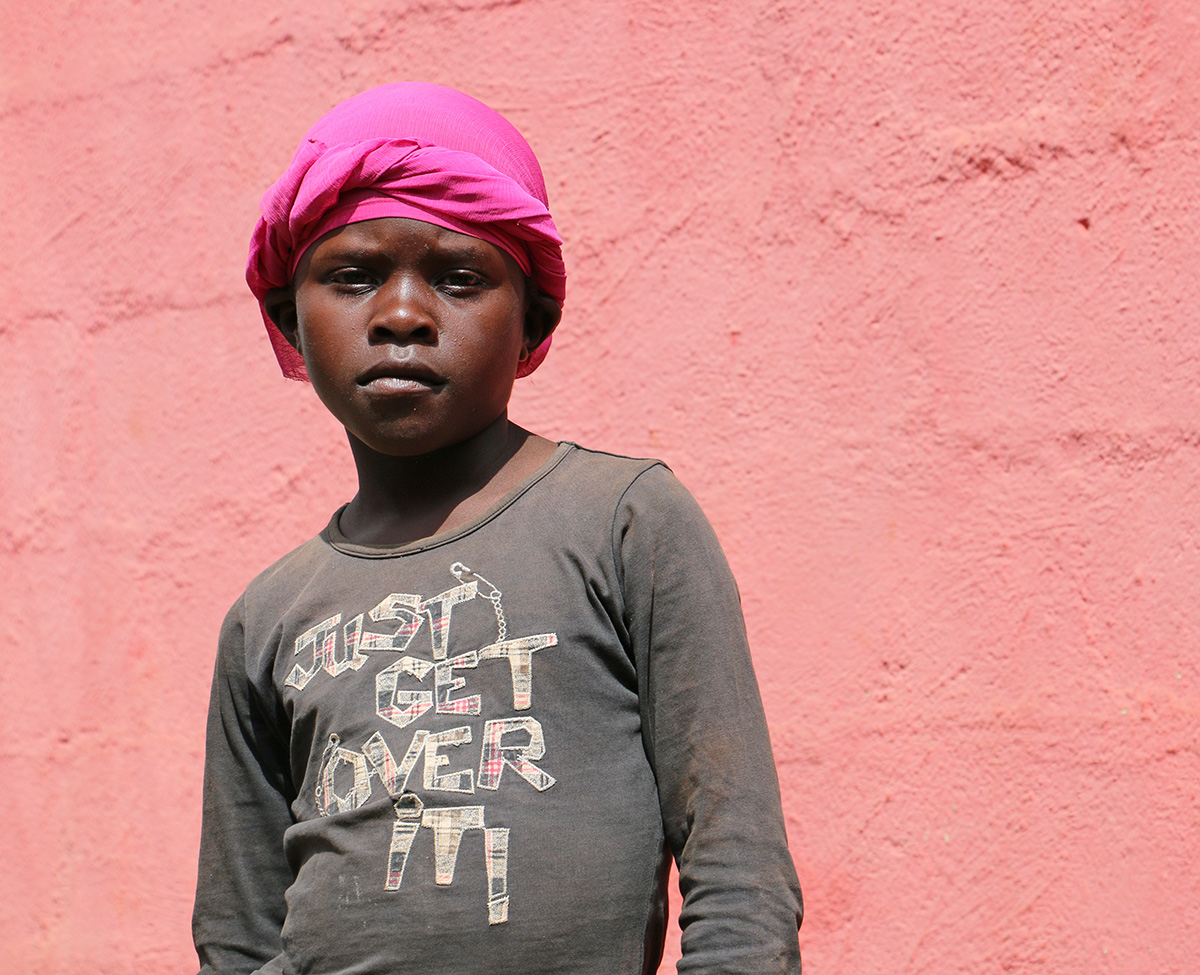
Sandra Ayuma, 7, stands strong despite challenges growing up as a girl in Kibera. [Photo © Evelyn Harford]
This type of support is not often found for women living in Kibera. Small communities of women form around local change makers like Maggie and Naimo. These women provide support for other women who can’t stand up for themselves. Both Maggie and Naimo have been victimized by men and know that an empowered woman is a vulnerable woman. When women partake in activities to empower themselves they must have support for the unintended consequences that come from those activities.
Just as there must be coordination between different government departments to roll out an effective urban agriculture program within Nairobi. This coordination and consultation must include gender-specific consultations to ensure women’s safety and long-term empowerment and economic success.
There is intersection between these women’s empowerment and agriculture that needs to be addressed for full development potential to be realized. Through the vehicle of agriculture, women could be thrust more fully into the formal economic and political sphere from which they are currently being excluded. The “African Green Revolution” presents this opportunity.
For new, constructive policy to come out of this, it will take government action; not just NGO advocacy. The urban agriculture reforms in Nairobi and the government-sanctioned projects that will target the city’s most vulnerable within informal settlements, shows a slow, creeping commitment towards the important objectives for urban agriculture in the global south.
The local regulation is shifting but there is still no national strategy to incorporate urban agriculture as a part of the solution for urban food insecurity. Since the government of Kenya owns lands that are informally settled communities, including Kibera, all levels of government need commitment.
Until then, this leaves active participants, primarily women, on unstable ground as land ownership rights are difficult and often impossible to establish without government commitment at all levels.
It is up to political will and institutional and grassroots cooperation that, if committed to properly, can turn the grand visions of a food secure and equitable world into a reality.
Revolutions historically don’t take place overnight, sustained revolutions and paradigm shifts start at the grassroots level with individual people, like Maggie, Judy, Naimo, Zainab, Rehema, Faith, Ali and Edmonton.
While the root of change has been planted, we’re still very far away.
Click below to read the stories of Kibera’s urban farmers.
